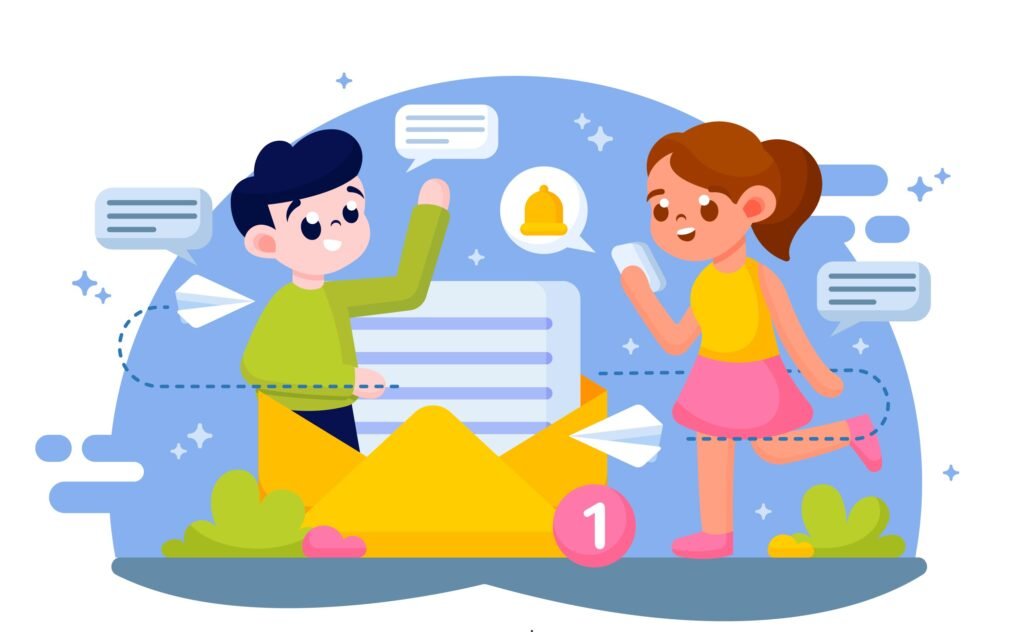Why Storytelling Works in Email Marketing
Humans are naturally drawn to stories. From ancient myths to modern novels, storytelling has always been a fundamental way to convey messages and emotions. In the context of email marketing, stories can turn mundane promotional content into compelling narratives that resonate with recipients.
Emotional Connection
Stories evoke emotions, and emotions drive actions. When a brand tells a story, it creates an emotional bond with its audience. This bond is crucial in email marketing, where the goal is to encourage recipients to take specific actions, such as making a purchase, signing up for a webinar, or sharing content. By weaving storytelling in email marketing campaigns, brands can create a sense of trust and familiarity that plain promotional messages often lack.
Memorable Content
Emails filled with dry, factual content are easily forgotten. However, a well-told story sticks in the reader’s mind. When a brand uses storytelling in email marketing campaigns, it increases the likelihood that recipients will remember the message. This memorability can lead to higher open rates in future campaigns and better overall engagement.
Differentiation
In a sea of promotional emails, standing out is critical. Storytelling provides a unique opportunity for brands to differentiate themselves from competitors. A story about how a product was developed, customer testimonials, or behind-the-scenes looks can make an email campaign more intriguing and relatable, setting the brand apart from others who rely solely on traditional marketing tactics.
How to Incorporate Storytelling in Email Marketing Campaigns
Incorporating storytelling in email marketing campaigns requires a thoughtful approach. Here are some strategies to effectively integrate storytelling into your email marketing efforts:
Know Your Audience
Understanding your audience is the first step in crafting compelling stories. Conduct thorough research to determine what resonates with your target demographic. Use data from previous campaigns, social media interactions, and customer feedback to gain insights into their preferences, challenges, and interests. Tailor your stories to address these elements, ensuring they are relevant and engaging.
Create a Compelling Narrative
Every great story has a beginning, middle, and end. Structure your emails similarly to guide readers through a narrative journey. Start with a captivating hook to grab attention, follow with a middle section that builds on the story, and conclude with a strong call to action. Ensure the story aligns with your brand message and marketing goals.
Use Authentic Characters
Characters are the heart of any story. In email marketing, these characters can be your customers, employees, or even the brand itself. Share real-life experiences, testimonials, or case studies that highlight how your product or service has made a difference. Authenticity builds trust and credibility, making your stories more believable and impactful.
Visual Storytelling
Incorporating visuals can enhance the storytelling experience. Use images, infographics, and videos to complement your narrative. Visuals not only make the email more attractive but also help convey the story more effectively. Ensure the visuals are high-quality and relevant to the content to maintain a professional appearance.
Keep It Concise
While storytelling is important, remember that email is a quick-read medium. Keep your stories concise and to the point. Focus on delivering the key message without overwhelming the reader with excessive details. Brevity ensures your audience stays engaged and retains the information.
Examples of Effective Storytelling in Email Marketing Campaigns
Several brands have successfully harnessed the power of storytelling in their email marketing campaigns. Here are a few examples:
Airbnb
Airbnb often shares stories of hosts and guests in their emails. These narratives showcase unique travel experiences and highlight the diverse community of Airbnb users. By featuring personal stories, Airbnb creates an emotional connection with its audience, encouraging them to explore new destinations and book accommodations through their platform.
Nike
Nike excels at storytelling by focusing on athletes’ journeys and achievements. Their emails often include inspiring stories of perseverance and success, motivating readers to pursue their own fitness goals. Nike’s storytelling approach reinforces its brand message of empowerment and excellence.
Warby Parker
Warby Parker, an eyewear company, uses storytelling to explain their social mission. They share stories of how their “Buy a Pair, Give a Pair” program has impacted communities in need. This narrative not only promotes their products but also emphasizes their commitment to social responsibility, resonating with socially-conscious consumers.
Conclusion
The power of storytelling in email marketing campaigns cannot be overstated. By creating emotional connections, making content memorable, and differentiating from competitors, storytelling can transform your email marketing efforts. To leverage this strategy effectively, understand your audience, craft compelling narratives, use authentic characters, incorporate visuals, and keep your stories concise. As demonstrated by brands like Airbnb, Nike, and Warby Parker, storytelling can drive engagement, build loyalty, and ultimately, boost conversions. Embrace storytelling in your email marketing campaigns to create a lasting impact on your audience.
Pro Tip
Unlock the full potential of your email marketing campaigns with ConvertKit. Start your free trial today and see the difference storytelling can make!


